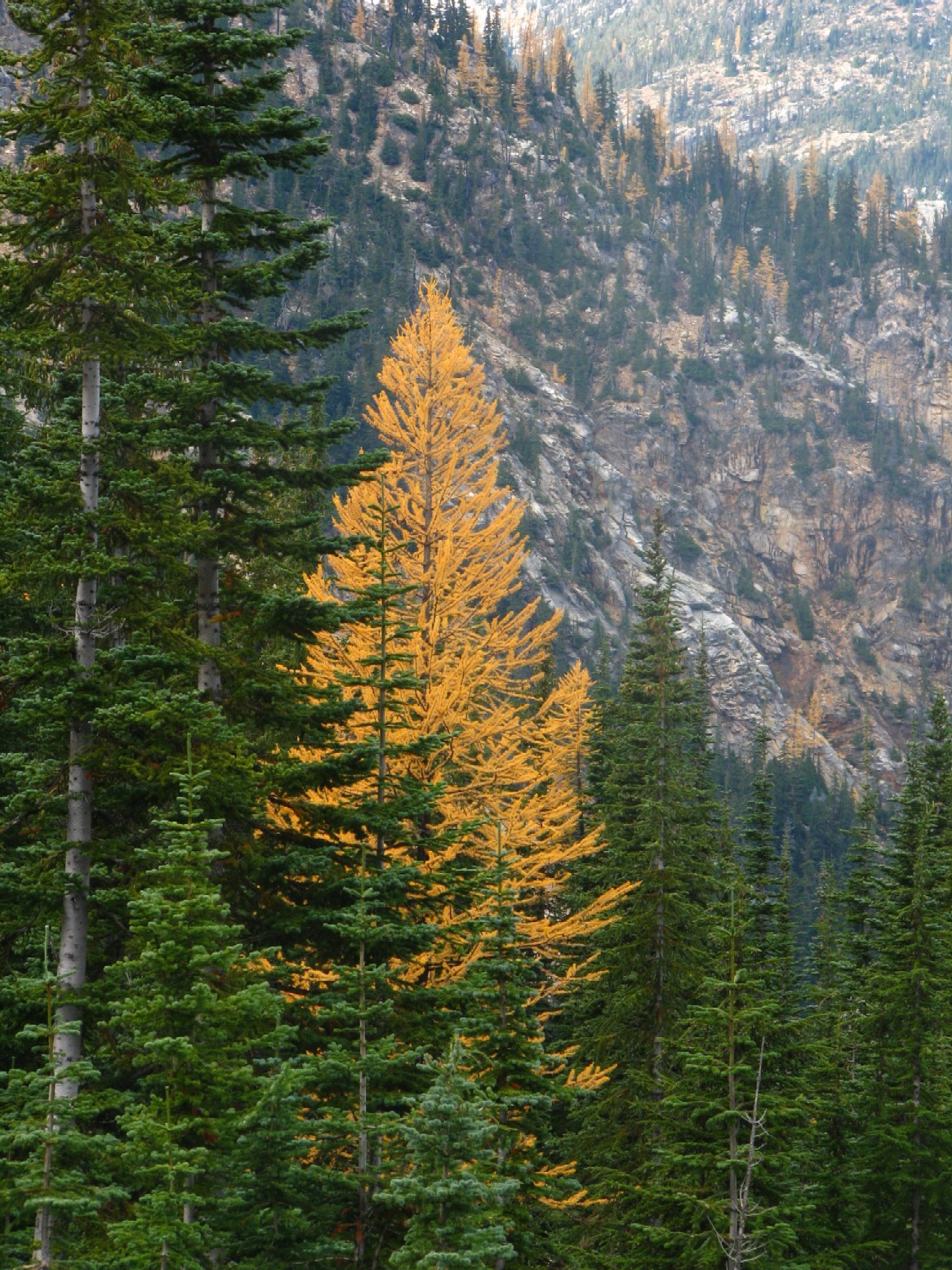Notes from the 6th (last) class of the Botany Conservation Course
by Course Volunteer Phyllis Daniels & Course Coordinator Mary Kiesau
We started the class off with a quiz lead by Mary Kiesau, course coordinator. Images of plants were projected and we had to answer questions about them. See the quiz here.
Then, George Wooten taught a short session on Plant Geography. George reminded us that even though we have learned how to identify flowers by using plant keys based on plant characteristics, we will run into situations where keys will only get us so far and sometimes habitat is the best way to identify a particular species.
The geographic patterns that plants form give us clues as to how they got there.
Plant geology involves four patterns:
- habitat
- process
- genetics
- mutualism (interaction with other species).
 |
| Western Larch and Subalpine Larch look identical but are separated and distinguished by habitat (elevation). |
 |
| Alpine Forget-me-not only grows on certain high elevation peaks. |
An example of habitat would be that wild pansies are very rare in Okanogan county because of a need for a very specific habitat. It needs to have a special clay soil and will not grow in the sandy soil we see in the valley.
Process is what actively happens in the habitat; some examples of processes are fire, snow, and glaciation. A Macloskeyi violet only lives in soil that has been turned over from receding snow.
Genetics play an important role for example when the flower has adapted so that it can bloom underground. That is amazing because no pollinator can reach it, so why would it do that? Plants can get stuck in a particular habitat and become so specific it can’t move out of it, so if something changes the habitat (like the climate change) the plant will probably go extinct because it's so specifically designed for the old habitat.
Mutualism is the way two organisms of different species exist in a relationship in which each individual benefits. There are so many cases of animals and plants needing each other to survive. In co-evolution, it’s sometimes hard to tell where the plant ends and the animal begins.. so George left us with this intriguing question - If they cannot exist without one another then are they different species or fundamentally one combined organism? Is it a plant or an animal? Ponderosa pine or squirrel? Squirrel or serviceberry? Bear or huckleberry?
No comments:
Post a Comment